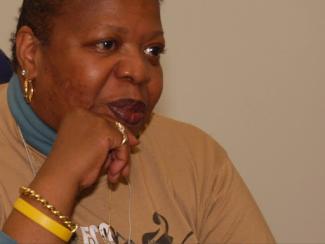
Real or not real? It's been 45 years since the FBI interrogated Cleo Silvers' family, hunting for her. And 40 years since she was arrested for involvement with the Black Panther Party. But as a nearly 80-year-old elder whose days with the Black Panthers and the Young Lords are long over, she is still haunted by memories of surveillance.
Silvers' name appears throughout declassified COINTELPRO files. In the 1990s and early 2000s, the FBI intimidated several of her employers into firing her. Silvers still believes her apartment is bugged. She sees SUVs trailing her. Strangers try to lure her into illegal activity before mysteriously disappearing.
Surveillance PTSD manifests as "hypervigilance, anxiety, depression, and mistrust of formal institutions." How can our movement elders recover when the threat is real?
This type of PTSD frequently involves "flash-forwards" instead of flashbacks, where a person is terrified by the idea of what could happen. In a society where cameras permeate public spaces, white vigilantes roam neighborhoods, and our smartphones track our locations and interests, the anxieties of surveillance influence hypervigilant behaviors in all of us—potentially even more than cops do.
The FBI admitted to wanting to “induce paranoia," knowing its debilitating physical effects, like heart attacks. But we can take surveillance seriously, affirm our experiences, balance vigilance with mental health, and evaluate what forms of surveillance we're exposing ourselves and others to, from Ring cameras to what we're posting of others online. Our movement elders’ fight isn't over.